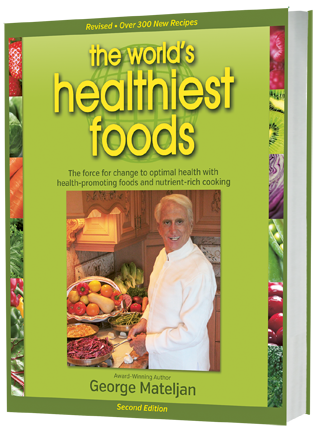
To order and more. . .

The nutritional comparison between canned and non-canned chickpeas can be a tricky one to make. The problem stems from a difference in edibility between canned versus dried chickpeas. Canned chickpeas are "ready-to-eat." They are fully cooked and can be used as is. Dried chickpeas are not ready-to-eat and need to be cooked by some method in order to be fairly compared to canned chickpeas.
Since methods of preparing dried chickpeas can vary greatly, so can the answers you get in any nutritional comparison between these two forms of chickpeas. Like any food, it's easy to overcook chickpeas and create a lot of unnecessary nutrient loss. When comparing canned to non-canned chickpeas, it's important to select a ready-to-eat form of non-canned chickpeas. It's also important to notice the calories and gram weights of the canned versus non-canned versions. One cup of canned chickpeas will not have the same amount of calories or weigh the same as one cup of non-canned chickpeas. In other words, you will be getting slightly more or less food in one of the versions, and that difference in amount will affect the nutrient totals.
Given all of the above factors, we selected two forms of chickpeas from the U.S. Department of Agriculture's Standard Reference database, in its up-to-date SR21 version. Using this USDA database, we compared 1 cup of chickpeas (boiled without salt) and one cup of canned chickpeas. The non-canned version weighed 164 grams, and the canned version weighed 240 grams. This difference tells us that some of the liquid contained in the canned version was probably included in the analysis, or that the chickpeas in the canned version were slightly more saturated with water. Still, these two versions were only 6% different in terms of calories, with the canned version providing 286 calories and the non-canned version providing 269 calories. Those numbers are plenty close for making a general comparison between the two forms of chickpeas.
First, we'd like to address the issue of sodium. Canned chickpeas usually contain much more sodium than the non-canned version. In our comparison, we found 11 milligrams in the non-canned and 718 milligrams in the canned! However, a large percentage of this sodium can be removed if the canned chickpeas are removed from the can, placed in a strainer, and rinsed thoroughly for about one minute. Because this step is an easy one to take, we don't consider the sodium difference to be a problematic one. Here are other key nutrient comparisons between these two chickpea versions:
| Nutrient | Non-Canned | Canned | Non-Canned Result |
|---|---|---|---|
| Protein | 14.5 grams | 11.9 grams | 14% greater |
| Fiber | 12.5 grams | 10.6 grams | 15% greater |
| Magnesium | 79 milligrams | 70 milligrams | 11% greater |
| Iron | 4.74 milligrams | 3.24 milligrams | 32% greater |
| Zinc | 2.51 milligrams | 2.54 milligrams | 1% lower |
| Folate | 282 micrograms | 161 micrograms | 43% higher |
| Vitamin B6 | 0.228 milligrams | 1.135 milligrams | 80% lower |
| Pantothenic Acid | 0.469 milligrams | 0.718 milligrams | 35% lower |
| Vitamin B2 | 0.103 milligrams | 0.079 milligrams | 23% higher |
As you can see in the above comparison, some nutrients come out higher in the non-canned chickpeas, and some come out lower. However, when interpreting the above table, it's also important to think about the way chickpeas fit into an overall diet. Legumes, including chickpeas, are typically important for maintaining healthy levels of protein and fiber, and as the above comparison shows, both do a great job of providing you with these nutrients. It's true that the non-canned version is about 15% higher in both protein and fiber. However, at the same time, canned chickpeas do a great job of providing you with these nutrients in highly significant amounts. For example, the fiber content here is actually greater that the average adult fiber intake in the U.S. for an entire day!
It's also important to note that some nutrients are never provided in substantial amounts by any form of chickpeas. For example, there is no vitamin B12 in chickpeas at all. There is also very little vitamin E and very little vitamin A. In other words, it doesn't make sense to us to worry about a nutrient being lower in canned versus non-canned chickpeas if chickpeas aren't an important source of that nutrient in the first place.
Given all of the above considerations, we believe that canned chickpeas make a reasonable alternative to non-canned chickpeas when it comes to most of the key nutrients provided by this food. Of course, it is always better to consume food in the freshest form possible, and this includes chickpeas! But for an individual who would not otherwise be eating chickpeas and who is highly motivated by the added convenience of a canned version, we believe that this version makes a good trade-off (although please note that there may be other issues, not related to nutrient levels, to consider when it comes to purchasing food in cans) . We would not claim that canned chickpeas can deliver the exact same taste or texture as non-canned. But they can still be very enjoyable!

